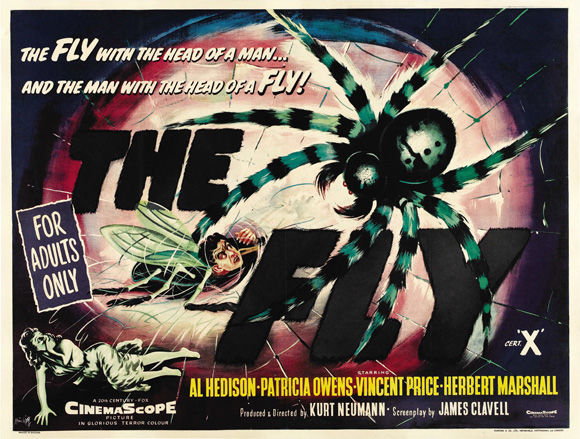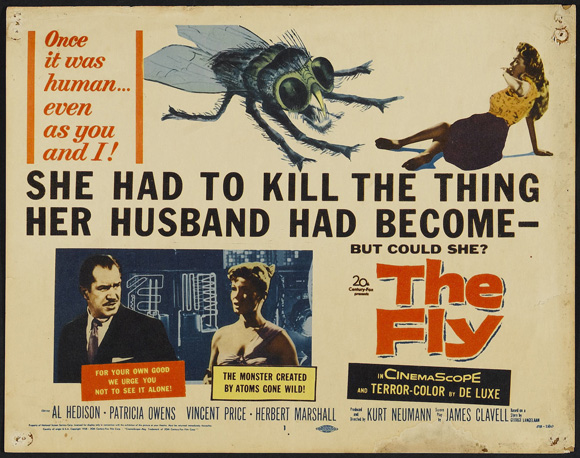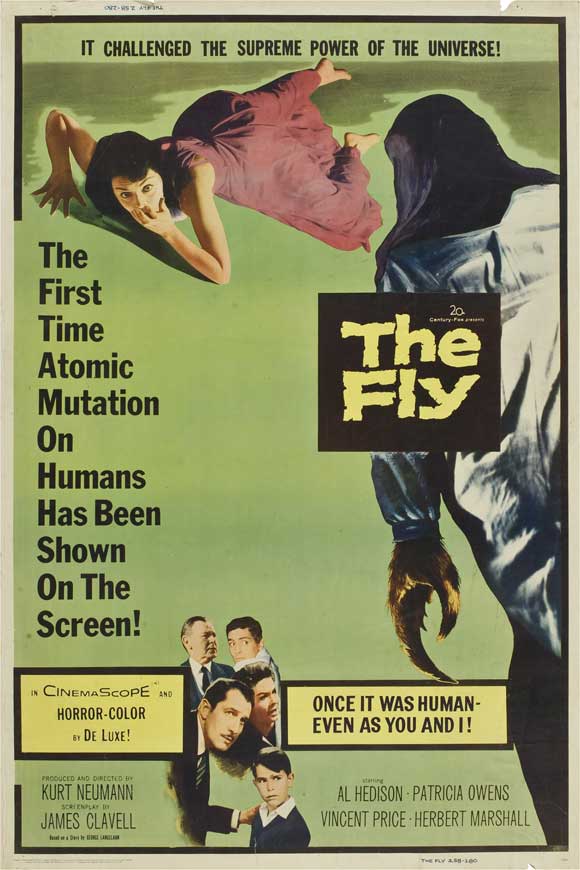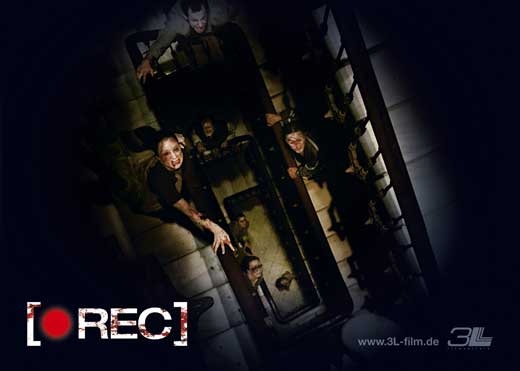I was rather young, about ten years old. I was intrigued about The Fly after seeing a Simpsons "Treehouse of Horror episode" which homaged it (including the web scene, more on that later) My parents, absolutely underestimating my sensitivity to anything remotely frightening, thought my repeated vocal worries about the subject matter were entirely unfounded. Yeah, right. To be fair, they hadn't seen the film either, so how were they to know that this cheesy sci fi film could possibly terrify a child who hid behind the sofa whenever she heard the Psycho theme?
Admittedly, the first half of the film is rather tame, though it does contain an extremely effective build-up to the inevitable monster of the title. Those who have seen the film know what I'm talking about. The reveal was frightening enough, when the wife pulls back the black cloth over her transformed husband's head only to reveal that dreaded fly's head, her screams reflected in its multiple eyes. That was enough to send me running up the stairs, and I wouldn't come down again until my parents exasperatedly shouted up the stairs that the "scary part" was over. Foolishly, I believed them, and went down, aware what was going to happen, but underestimating its impact.
So, if that poster at the beginning of the post didn't already give it away, after the scientist with a fly's head ends up getting destroyed by his wife, the fly with the scientist's head is still free. That is, until the scientist's son finds it stuck in a web, and the audience is treated to a 1-2-3 punch of shock:
1- The Voice. Before we get a chance to see anything clearly, we hear that voice. That ungodly high pitched voice, so tiny that it's indistinguishable from a fly's buzzing. It's the scientist, crying out in primal pathetic tones. "Help me! Help me!" And it's coming from the middle of a spider web.
2- The Spider. When we finally get a close-up on the fly/scientist crossover, we are mistreated to the grotesque sight of a bald, toothless human head on a fly's body, wrapped up in spider silk, its lone human arm sticking out helplessly as a gigantic spider looms over him. The Magic School Bus taught me long ago what was going on, and what the impending fate of the fly would be.
3- The Rock. Just as the fly completely covers up its victim, and the fly/scientist gives a spine-chilling scream of fear, Inspector Herbert Marshall, viewing the scene with Vincent Price (ah, 50s casting), grabs a rock and slams it down on the spider, effectively killing it and the fly creature.
So, in simple math, when you add 1.screeching, primal voice of the fly/scientist + 2. horrifying visuals of snarement + 3. a sudden, brutal conclusion to a scientist's wayward experiments, you = 1 absolutely terrified 10 year old.
I know I eventually feel asleep that night, but it took a very long time. I distinctly remember that my leg could not stop twitching, that was how edgy I felt. Even after such jumpers as The Haunting (1963) and Insidious, I can still get a good night's sleep. But even know, if I come across a scene from a certain 50s sci-fi film that took a silly concept and turned it into a tragedy of regressive humanity, subconsciously I can't hold back a shiver.















